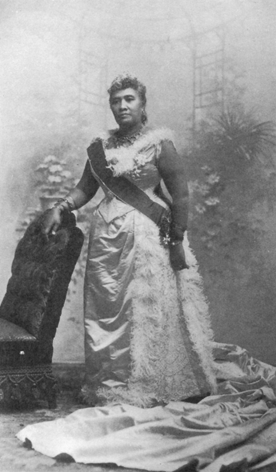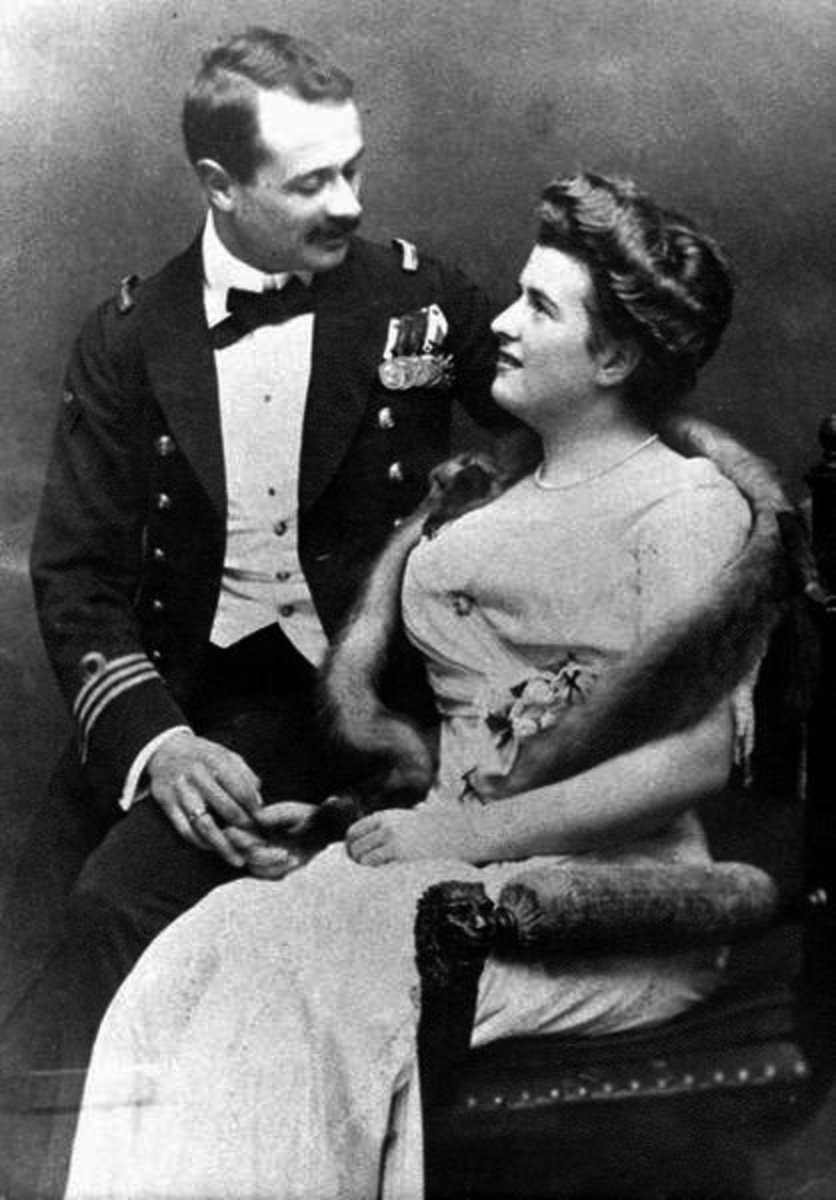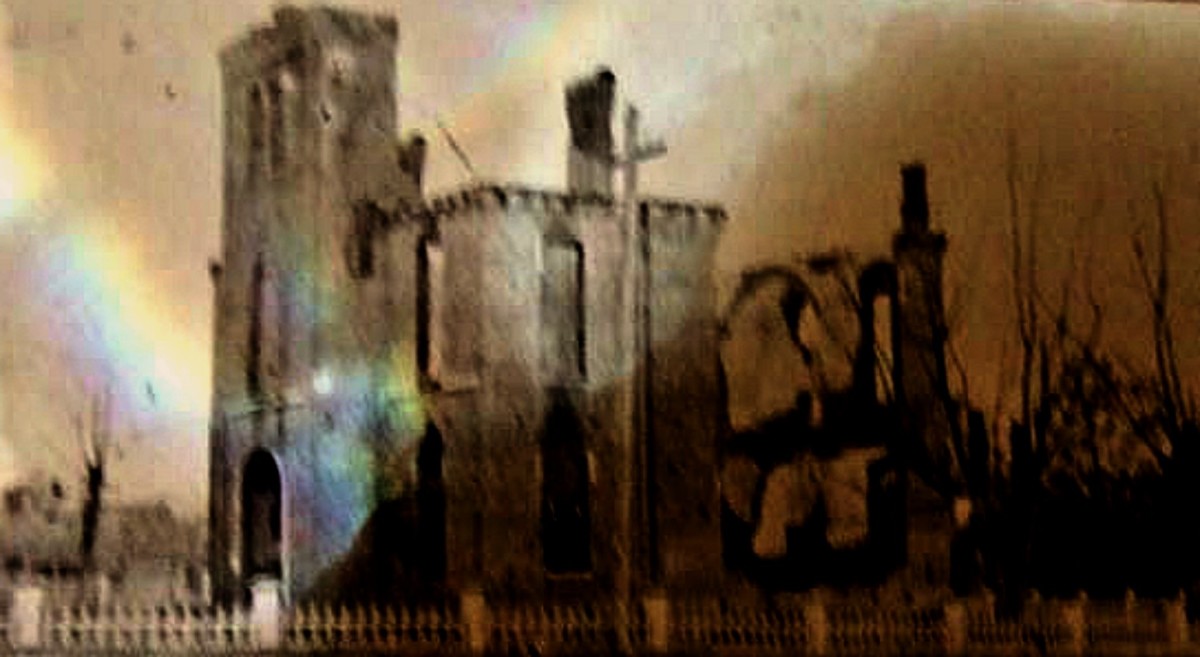The Overthrow of the Hawaiian Monarchy
Liliuokalani - Hawaii's Last Queen

The End of Hawaiian Monarchy - 1893
How The Overthrow of the Hawaiian Monarchy was achieved in 1893-An Imaginary Interview of Lorrin Thurston in 2010
By Michael M. Nakade
Interviewer: Mr. Thurston, thank you for agreeing to an interview. You’re well known in Hawaii as the man who masterminded the overthrow of the Hawaiian Kingdom in the late 19th century. Perhaps, you may defend your actions through this interview.
Thurston: I don’t need to defend myself for what I did. In 1893, I knew it was in the best interest of Hawaii to become a part of the United States. Today in 2010, Hawaii is prospering as the 50th State, enjoying the privileges of America’s economic and political greatness. Of all the island peoples in the Pacific, the people of Hawaii enjoy the highest standard of living. If anything, I should be commended for helping Hawaii become a part of the United States.
Interviewer: In the 19th century, Hawaii had its own kingdom and government. So, why did you think that Hawaii would be better off getting rid of her kingdom and being controlled by the people of another country?
Thurston: I realize that people of the 21st century tend to look back at the old Hawaiian Kingdom romantically. But, the truth is that the Hawaiian Kingdom was not functioning well. Late 19th century international politics was dominated by the idea that stronger nations would inevitably conquer weak nations. Hawaii was a small and insignificant kingdom. It wasn’t hard to imagine that the Hawaiian Monarchy would dissolve at some point. I worked hard behind the scenes to dissolve the monarchy in order to ensure that Hawaii’s future would be tied to America. I did not wish to see Hawaii be taken over by one of the European powers.
Interviewer: Mr. Thurston, let me ask you this: Why didn’t you support the notion that the Hawaiian Kingdom remain independent so that the people of Hawaii could decide their future for themselves?
Thurston: I think you (the interviewer) are looking at the 19th century Hawaii situation through the lens of the 20th century agenda. Specifically, you are referring to one of Woodrow Wilson’s 14 points. Yes. I understand that the people of the 21st century want to see the sovereignty of the colonized people. But the truth of the matter is that none of us were thinking like that in the late 19th century. I was pushing for Hawaii being annexed by the United States because I honestly believed that it was in the best interest of the people of Hawaii. The Kingdom of Hawaii was much too weak to remain independent in the late 19th century. My thinking was that Hawaii was going to be colonized by a foreign power sooner or later. If so, the annexation by the U.S. was the best option.
Interviewer: Why were you so in love with America in the late 19th century? Most people in Hawaii at the time did not share that sentiment with you.
Thurston: The entire economy of Hawaii depended on sugar export. Thank goodness the Americans were buying up our sugar. If the Americans had put a tariff on our sugar, the sale of our sugar would have suffered. If our sugar industry suffered, Hawaii would have suffered. I knew that we were at their mercy. It was in our vital national interest to be on the good side of the Americans.
Interviewer: Accepting Hawaii’s economic ties with America is one thing. But the overthrow of the Hawaiian Monarchy is an entirely different matter to me. Why didn’t you think that the Kingdom of Hawaii could be pro America in trades but at the same maintain her independent nation-state status?
Thurston: To be perfectly honest with you, I had no faith in King Kalakaua. He was poor at running the kingdom. Furthermore, he lacked the correct vision for the future of Hawaii. I was afraid that he might do something foolish to cause irreparable damages to Hawaii. I took the first step by creating a new constitution in 1887 to take away the king’s decision-making power. He and some pro Hawaiian Monarchists called that constitution the Bayonet Constitution. They can call it whatever they want. It was the beginning of the end of the Hawaiian Kingdom. After that, the real decision-making power rested with the cabinet members. I felt that Hawaii would be safe with these men running Hawaii’s government. On a personal level, I didn’t value the Hawaiian independence. Hawaii was just a small, weak, and insignificant island kingdom in the Pacific.
Interviewer: The Bayonet Constitution of 1887 upset many native Hawaiians. There was an uprising against those who benefited from this constitution. How did you feel about many people being unhappy with the new constitution?
Thurston: Yes, there was a man named Robert Wilcox who led the uprising against the lawful government of Hawaii. It was a minor nuisance. Fortunately, our military crushed the rebellion without much difficulty. The presence of a few oppositions was not going to change the natural tide of history. The government of Hawaii was not returning to the days of incompetent Hawaiian kings who could mess things up for the people of Hawaii.
Interviewer: In October 1891, King Kalakaua died while traveling to San Francisco. His sister, Lili’uokalani, ascended to the throne. Although she swore to uphold the so-called the Bayonet Constitution, her actions spoke otherwise. What was really going on in 1891?
Thurston: Shortly after her ascension, Queen Lili’uokalani came to the cabinet to demand that the Constitution of 1887 be abolished. Because she thought she had the support of the native Hawaiians in her kingdom, she felt she was obliged to regain the royal power which her brother had lost. Technically, many of those native Hawaiians and recent sugar cane field immigrants from Asia were not enfranchised. In other words, it didn’t matter what they thought of the Constitution of 1887. The royal family was just a figure head in Hawaii whether the new queen liked it or not.
Interviewer: But, subsequent history tells us that the Kingdom of Hawaii was gone by 1893. What happened in those two short years?
Thurston: The new queen’s belligerent attitude toward the Cabinet was alarming. She was trying to turn back the clock by restoring power to the royal family. I organized a new club called “Annexation Club” so that I could plan for an eventual annexation of Hawaii to the United States. In retrospect, it was a good thing that the Queen was belligerent toward the Constitution of 1887. Her attitude gave me the reason for her removal. I was in touch with many Pro American residents in Honolulu to plan for the U.S. involvement in her removal. I knew that the annexation of Hawaii to the United States would happen sooner or later.
Interviewer: The trouble with your response, Mr. Thurston, is that you have no regard for the hearts and minds of the Hawaiian people. The Hawaiian Kingdom was their pride and joy. Overthrowing such an institution was both insulting and devastating to the native Hawaiians. How do you respond to that?
Thurston: I think it’s dangerous to be overly romantic and sentimental about the Hawaiian Kingdom. The population of native Hawaiians was relatively small compared to non-Hawaiian citizens living in the islands at the time. Diseases that the Europeans brought to the islands reduced the native Hawaiian population by 90-95% in the 19th century. Since that was the case, I really wasn’t too worried about the feelings and the sentiments of the native Hawaiians. Fortunately, this new queen was rebelling against the existing lawful constitution, and it gave the cabinet legitimate reason to depose her. Her removal happened rather swiftly because she was both naïve and inexperienced in political leadership.
Interviewer: Would you elaborate on Queen Lili’uokalani’s naiveté and inexperience?
Thurston: The Queen talked very tough when she was denouncing the Constitution of 1887 in January of 1893. I jumped at this opportunity and began preparing for an armed show down. First of all, I publicly declared her action revolutionary. Secondly, I contacted John L. Stevens, an American minister to Hawaii about the availability of the American armed forces in Honolulu. He was willing to help me out. Queen Lili’uokalani buckled under the pressure and abdicated her throne. Our mission of removing her was surprisingly easy and swift. She put up no resistance. She couldn’t stomach any blood being spilled over her monarchy. I call that naïve.
Interviewer: I am sure that thequeen was hoping that it was a temporary thing. In her statement, she specifically said that she was surrendering her authority to the superior forces of the United States of America. She was not at all recognizing a new provisional government that was headed by Sanford Dole. Perhaps, she took the high road and avoided the bloodshed. She must have been 100% certain that the legitimate government in Washington D.C. would restore her back to her rightful throne when the dusts settled.
Thurston: That’s exactly what I meant by her inexperience. Most people who are involved in high stake politics do not place too much faith in the goodwill of the people. Politics is a dirty game. We have to take what we can when we can. Hoping and wishing that others would act honorably is simply foolish in politics. Queen Liliuokalani was a complete amateur when it came to the “real politic. “
Interviewer: Mr. Thurston, you sound very sinister. I personally don’t think the Queen’s optimism over her throne was that far fetched. The real U.S. administration in Washington D.C. was sympathetic to her in 1893.
Thurston: Yes, it is true. A newly-elected Democratic Party president, Grover Cleveland, came to Washington D.C. in March, 1893, and yes, he flat out refused to annex Hawaii right away. He even sent his man to Hawaii to do some investigation. But, it didn’t matter. The new Hawaiian government became a republic. We decided to wait around for a new American president in 1897. Hawaii was separated by five thousand miles from the east coast of the United States. Even if Cleveland didn’t like what he saw in Hawaii, he wasn’t going to do anything about it. He certainly couldn’t put the queen back to the throne even if wanted to. We weren’t going to follow his suggestions, if you know what I mean.
Interview: Hawaii was officially annexed to the United States in 1898 by the McKinley Administration during the Spanish-American War. But, nearly one hundred years later, the government of the United States sent an official letter of apology to the native Hawaiian people. How do you feel about the fact that you and Mr. John L. Stevens’ actions are seen by today’s American government as regrettable?
Thurston: A letter of apology by the United States of America to the native Hawaiian people just goes to show that words are very cheap. Those words do not change anything. If they were really sorry, they could restore the queen back to her rightful throne. But, it’s 2010, and where is the queen? We all know that the queen isn’t coming back. The fact is that the people of Hawaii are better off today because they are now proud American citizens. I am proud that I was instrumental in helping a small and weak kingdom in the Pacific be annexed to a great nation like America. Some people may not like how the annexation was achieved. But, as Niccolo Machiavelli says, “The end justifies the means.”
Interviewer: Thank you, Mr. Thurston for your time today. I think we really got to find out that you are a very sinister man.



